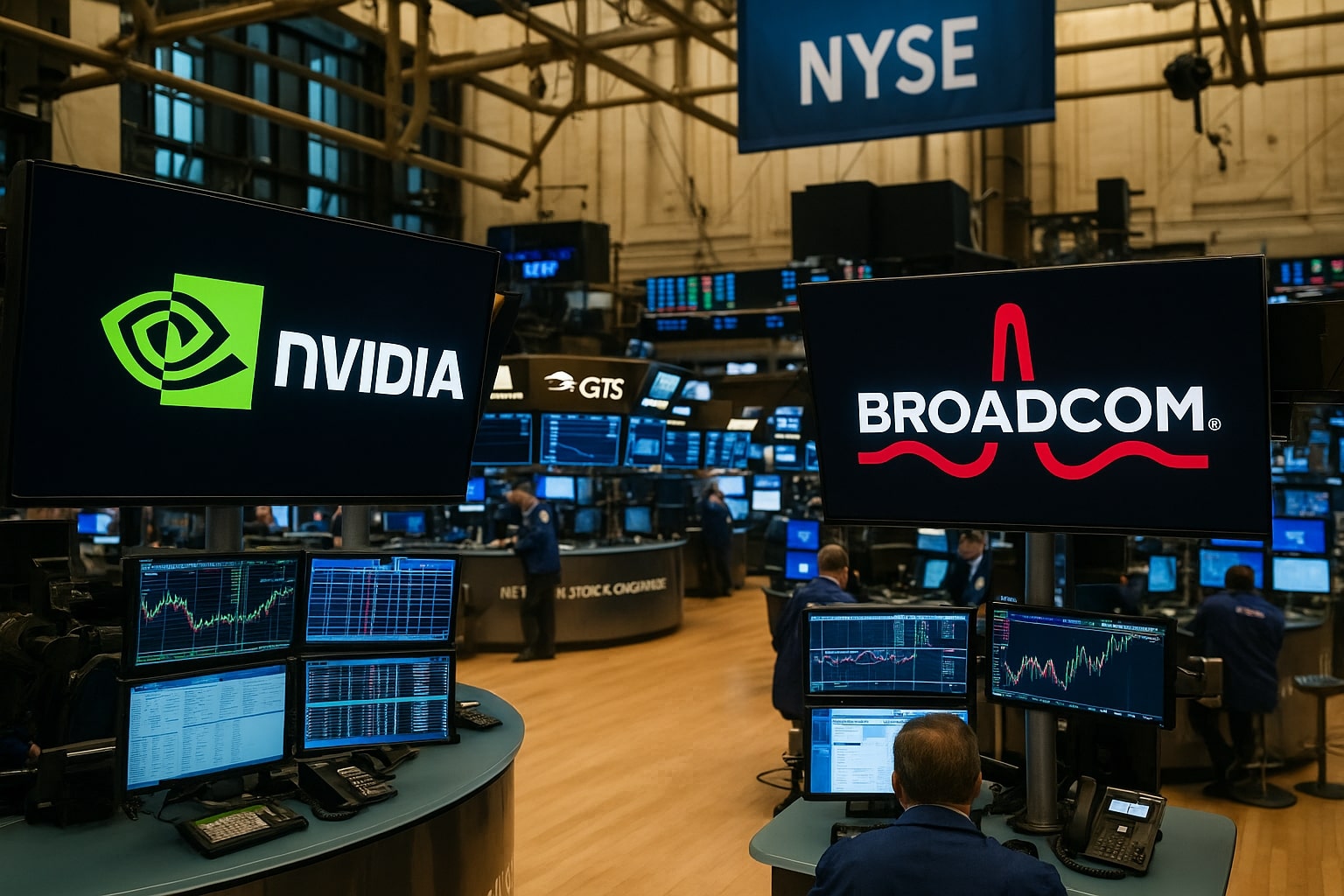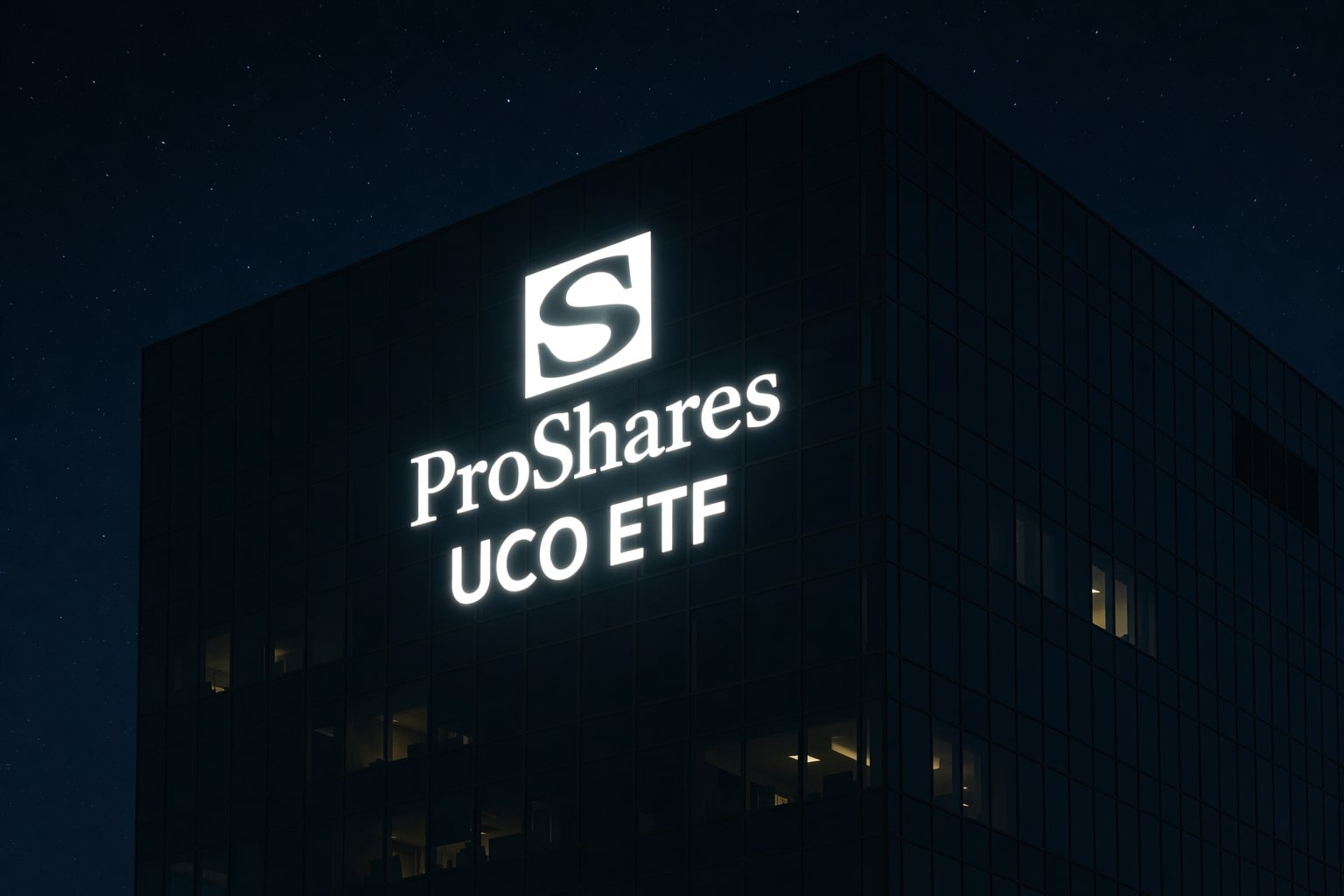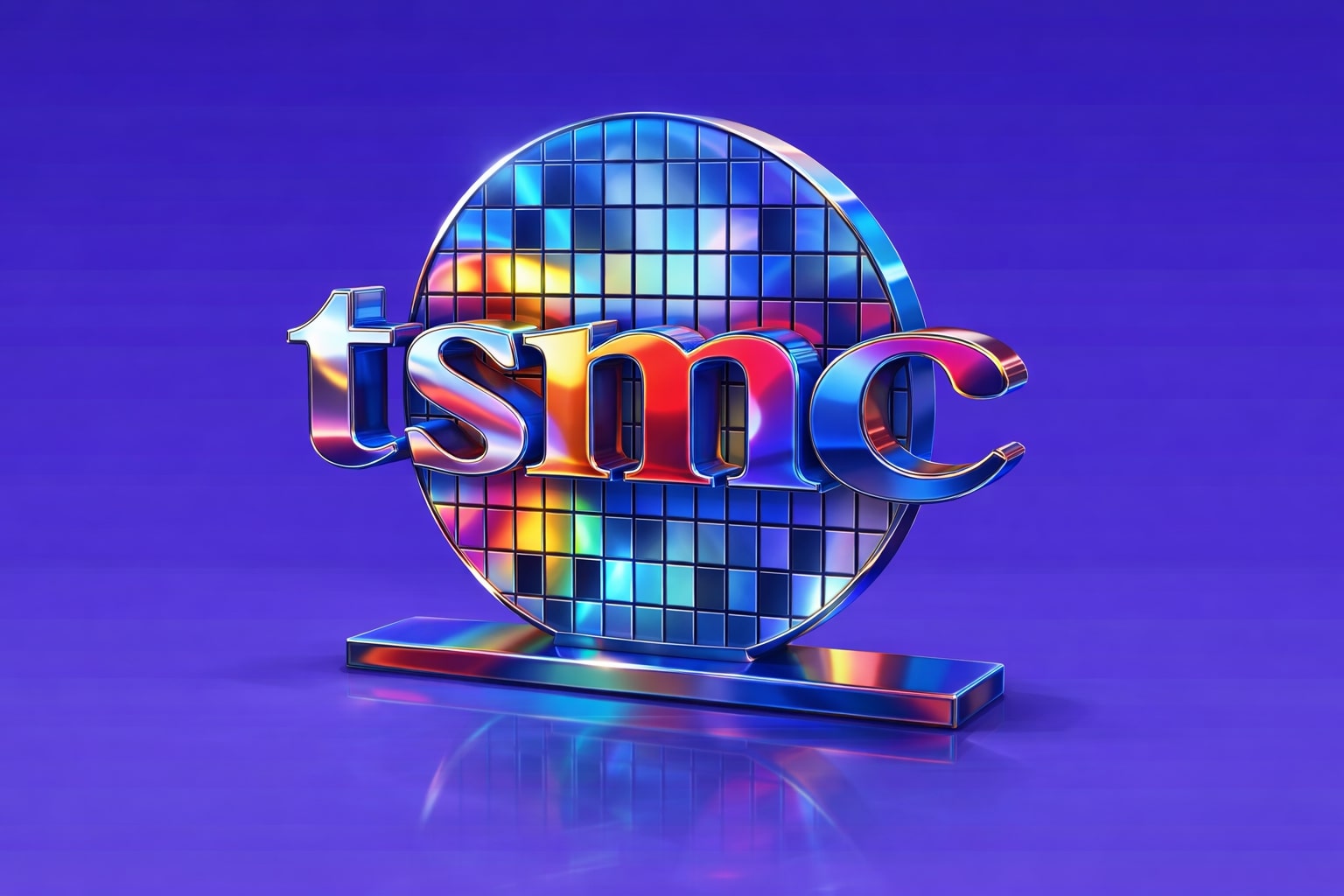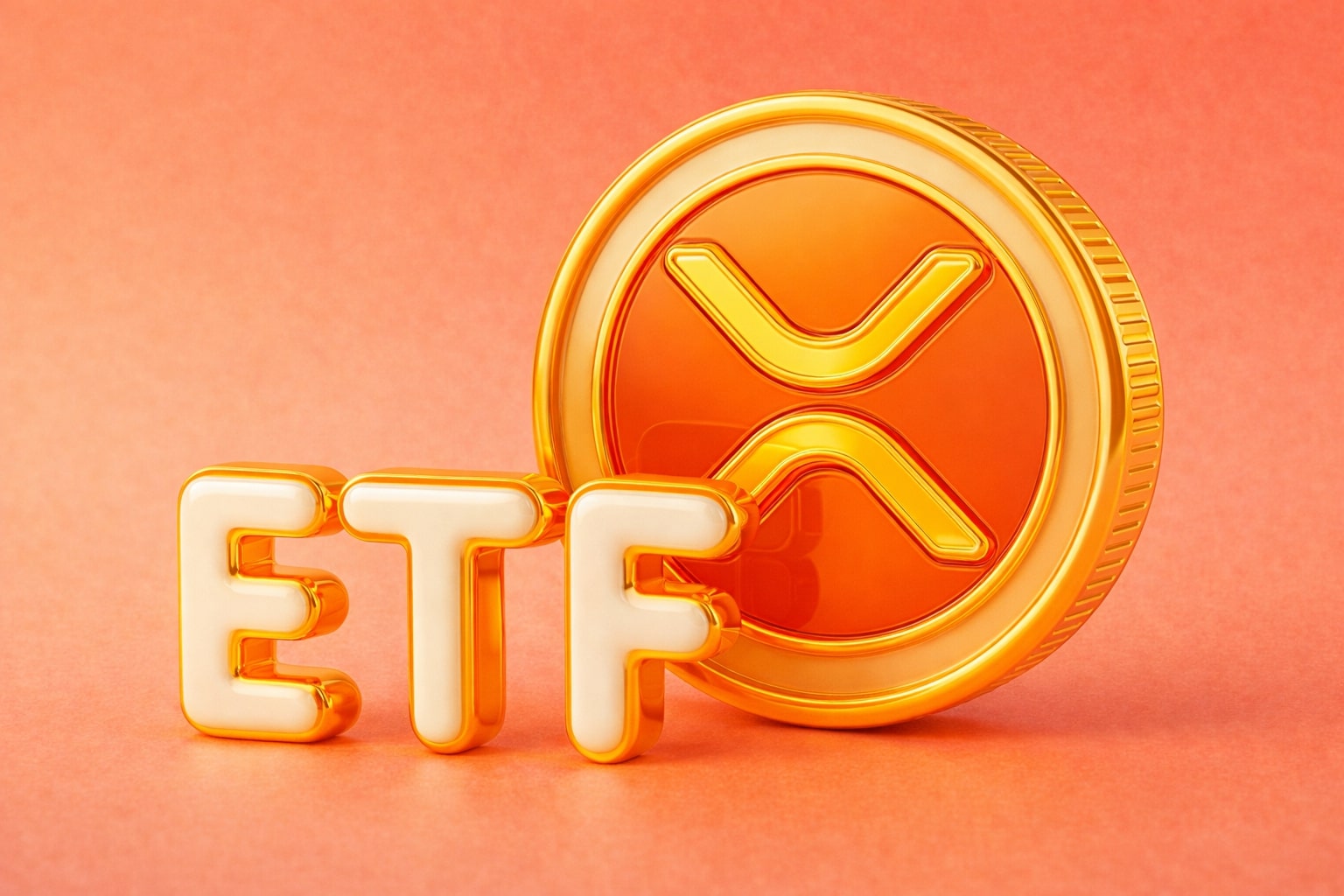
NVDA Stock vs AVGO Stock: $177 vs $360, AI Growth Drives $300 and $700 Targets
NVDA’s 56% data center surge and $60B buyback push upside beyond $215, while AVGO’s 26% chip growth and VMware margins fuel $450–$700 targets despite premium valuation | That's TradingNEWS
NASDAQ:NVDA at $177 vs NASDAQ:AVGO at $360 — Two Giants of AI Infrastructure
NVIDIA (NASDAQ:NVDA) trades at $177 with a market cap of $4.31 trillion, while Broadcom (NASDAQ:AVGO) trades near $360.50, valued at $1.72 trillion. Both companies dominate critical layers of the AI economy, yet their financial profiles, growth drivers, and valuations differ sharply. NVDA thrives on unmatched GPU dominance and software integration, while AVGO leverages diversified semiconductors and VMware’s high-margin software revenue. Investors weighing the two must examine earnings momentum, forward multiples, and sector positioning.
Revenue Growth: NVIDIA Outpaces Broadcom’s Diversified Engine
NVDA’s trailing twelve-month revenue is $165.2 billion, up 27% YoY, with Q2 2025 revenue at $46.7 billion, growing 56% YoY. Momentum suggests FY2025 sales could hit $200 billion, a 53% increase YoY. By comparison, AVGO reported $6.7 billion in VMware revenue in Q1 2025 alone, a 47% YoY increase, while total semiconductor sales grew 26% YoY. Broadcom’s quarterly revenues are smaller, but its mix is balanced between cyclical hardware and recurring software, offering stability.
Profitability: NVIDIA Maintains Historic Margins, AVGO Strengthens Software Base
NVIDIA operates with net margins above 52%, reporting $26.42 billion in Q2 2025 net income at a 56.5% margin. Operating income exceeded $28.4 billion, with gross margins at 72.4%. These levels are unmatched in semiconductors. AVGO, meanwhile, boosted VMware margins to 79.1%, supporting group profitability even as chip competition intensifies. Its trailing twelve-month net income of $18.9 billion gives a margin closer to 30%, lower than NVIDIA’s but steadier across cycles.
Valuation Multiples: Premiums Reflect Market Preferences
At $177, NVDA trades at ~39x forward earnings, with expected EPS growth of nearly 70% through FY2027. That implies forward PEG ratios well below 1. Broadcom, at $360.50, carries a 54x forward P/E, with EPS growth forecasts of 38% in FY2025, 36% in FY2026, and 28% in FY2027. On EV/Sales, AVGO trades at 27.7x, well above NVIDIA’s 20.7x, and massively higher than the semiconductor sector average of 3.37x. Despite slower growth, markets assign AVGO a premium due to its VMware integration and software resilience.
Balance Sheet and Buybacks: Divergent Strategies
Broadcom reduced long-term debt from $66 billion to $62.8 billion by Q3 2025, while increasing cash balances to $10.7 billion. Its deleveraging strategy strengthens its credit profile, though leverage remains above peers. NVIDIA has taken a different approach, authorizing an additional $60 billion buyback, on top of $14.7 billion already approved. These repurchases will lower share count and enhance EPS growth, signaling confidence in cash flow strength even amid China headwinds.
Hyperscaler Spending and Market Positioning
NVIDIA’s growth is directly tied to hyperscaler CapEx, which surged 67% YoY to $88.25 billion in Q2 2025 across Amazon, Microsoft, Meta, and Alphabet. Blackwell Ultra adoption is strong, with sovereign AI partnerships in Europe (France, Germany, Italy, Spain, U.K.) anchoring its international expansion. Broadcom’s AI exposure comes from custom ASICs for hyperscalers and networking hardware — a market expected to grow from $17.6 billion in 2023 to $31 billion by 2032. Its diversified positioning means it captures value across AI infrastructure layers but with thinner margins than NVIDIA’s GPU franchise.
Major Deals: Microsoft–Nebius vs VMware Acquisition
NVIDIA benefits from the $19 billion Microsoft–Nebius deal, which will increase GPU orders significantly. NVDA also holds 1.19 million Nebius shares, now up 334%, adding nearly $34 million in paper gains. Broadcom’s headline catalyst remains the $69 billion VMware acquisition, which transformed its revenue mix. VMware contributed $6.7 billion in quarterly sales, with high visibility and sticky customer bases. Where NVIDIA monetizes future AI workloads, Broadcom monetizes recurring enterprise IT budgets.
Technical Signals: NVDA Healthier, AVGO Overheated
NVDA trades just below its 52-week high of $184.48, with RSI at 55, suggesting room for more upside. Key support sits at $170–$172, while resistance looms at $185–$190; a breakout would target $200–$215. AVGO, at $360, is stretched with RSI above 70.6, flashing overbought. Short-term resistance stands at $365–$370, with upside toward $400–$450 if momentum continues. Support lies at $340–$345, where institutions are likely to defend positions.
Insider Trends and Institutional Flows
Insider activity for NVDA included Mark Stevens’ $88.6 million sale at ~$177.50, though he still holds over 19 million shares. Broadcom insiders have sold modestly, mostly compensation-related. Institutions favor both: sovereign wealth funds and pensions increased AVGO allocations, while hedge funds and growth managers remain overweight NVDA due to its EPS expansion profile.
Read More
-
UCO ETF Price Forecast: Can NYSEARCA:UCO at $18.57 Ride a 2026 Oil Squeeze?
18.12.2025 · TradingNEWS ArchiveStocks
-
XRPI at $10.50 and XRPR at $14.93 Hit XRP ETF Lows While XRP-USD Holds $1.84 After 30 Days of Inflows
18.12.2025 · TradingNEWS ArchiveCrypto
-
Natural Gas Price Forecast: Henry Hub Holds Around $4 as EIA Draw Hits 167 Bcf
18.12.2025 · TradingNEWS ArchiveCommodities
-
USD/JPY Price Forecast: Pair Holds Above 155 As BoJ And US CPI Set Up A Major Break
18.12.2025 · TradingNEWS ArchiveForex
Strategic Moats: Software Ecosystem vs Connectivity Dominance
NVIDIA controls the software stack with CUDA, TensorRT-LLM, and Dynamo, platforms used by 6+ million developers, creating a lock-in effect. Broadcom dominates connectivity, with chips powering 99.9% of internet traffic — from PCIe switches to storage controllers — giving it unmatched ubiquity. Both moats are defensible but appeal to different investor priorities: NVIDIA for hypergrowth in AI compute, Broadcom for diversified exposure with durable software margins.
Investment Verdict: NASDAQ:NVDA Offers More Growth, AVGO Provides Stability
At current levels, NASDAQ:NVDA looks undervalued relative to growth, with near-term upside toward $200–$215 and long-term potential at $250–$300 if hyperscaler CapEx holds pace. NASDAQ:AVGO is richly valued but supported by VMware’s recurring revenue and deleveraging progress, with upside toward $400–$450 near-term and a $700 long-term target by FY2027. For investors seeking maximum exposure to AI growth, NVDA is the Buy, while AVGO remains a Hold-to-Buy for diversification and stability.


















